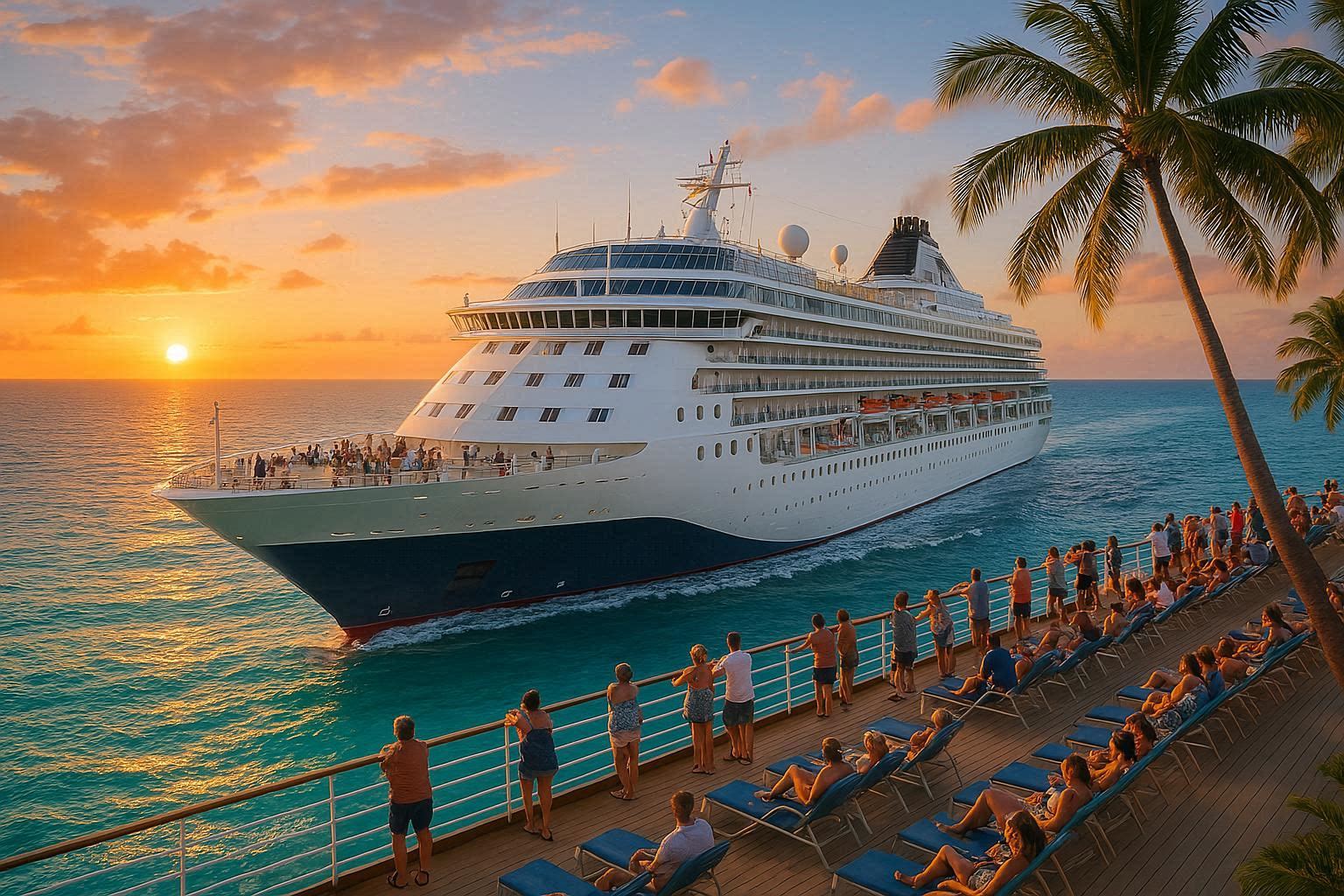Published on October 2, 2025
The performance of Carnival Cruise Lines has always been closely followed in the United States tourism and travel sector, given its reputation as one of the world’s largest cruise operators. Recently, the company revealed an impressive third-quarter report that showcased significant revenue growth and profit expansion, surpassing expectations on multiple fronts. These results initially pushed the share price upward, reflecting investor optimism about the recovery of international travel and cruise holidays. Furthermore, the management of Carnival raised its financial outlook for the year, marking the third consecutive quarter of improved guidance, signaling steady progress in the company’s operational strategy.
However, despite the celebratory mood surrounding the results, the stock took a sudden and sharp downturn as trading progressed. This reversal was not attributed to weak financial fundamentals but rather to concerns about refinancing plans and the potential dilution of shareholder value. The company announced its intention to redeem outstanding convertible notes using a combination of cash and equity, raising alarms among investors about future ownership dilution. This development highlighted the ongoing challenges faced by Carnival, particularly the heavy debt burden accumulated during the prolonged suspension of cruises caused by the global health crisis.
Advertisement
A Day of Market Drama for Carnival Cruise Lines
Advertisement
The trading day for Carnival Corp. (NYSE: CCL, CUK) reflected the volatility that often characterizes heavily scrutinized companies in the travel industry. In early morning trading, the stock price surged by more than 6%, fueled by enthusiasm surrounding the quarterly earnings release. By midday, however, sentiment shifted, and the gains not only evaporated but also turned into losses. By 3:30 p.m. ET, shares had declined by over 4%, closing at $29.40, down $1.22 from the previous session.
This dramatic shift served as a reminder that financial markets weigh not only present results but also future implications. For Carnival, the looming concern was not the ability to generate strong revenue but the strategy chosen to reduce its outstanding obligations.
Advertisement
Third-Quarter Earnings Beat Expectations
Advertisement
The third-quarter results were nothing short of remarkable for Carnival. Revenue came in at $8.12 billion, an increase of 3.3% compared to the same period last year. Adjusted non-GAAP earnings per share rose by 12.3% to $1.43, surpassing Wall Street projections.
Beyond headline numbers, Carnival also recorded improvements in several important operational metrics. Net yields, which measure revenue per passenger capacity, were higher than forecast. Costs per available lower berth day decreased, reflecting better cost management. Adjusted EBITDA levels also surpassed projections, giving investors confidence in the company’s operational strength.
Advertisement
Advertisement
Such a strong performance allowed management to revise its full-year guidance upward for the third consecutive quarter, further cementing the narrative of a company firmly in recovery mode.
The Debt Challenge Overshadowing Growth
Despite the operational success, Carnival’s financial structure continues to weigh heavily on investor sentiment. At the end of August, the company’s outstanding convertible notes stood at approximately $1.31 billion. In its press release, management confirmed its intent to redeem these notes with a mix of cash and equity.
While this move was designed to reduce debt obligations and strengthen the balance sheet, the mention of equity issuance immediately raised red flags among shareholders. Equity redemption dilutes the value of existing shares, meaning current investors could see their ownership percentage decrease. This concern was amplified by the fact that Carnival’s stock had already enjoyed strong gains in the preceding months, prompting some investors to take profits amid the uncertainty.
Market Valuation and Leverage Position
Carnival currently holds a market capitalization of around $40 billion. When combined with its net debt of $25.4 billion, the company’s enterprise value stands at $64.8 billion. With 2025 EBITDA guidance at $7.1 billion, the resulting EV/EBITDA ratio is calculated at approximately 9.1.
This valuation places Carnival in a middle ground: not excessively overvalued but not particularly cheap, especially when factoring in the company’s debt exposure. Management has expressed its commitment to reducing its debt-to-EBITDA ratio below 3, down from the current 3.57 level. Achieving this target would enhance the likelihood of securing an investment-grade credit rating, thereby allowing the company to refinance at lower interest rates.
A Broader Context: The Cruise Industry in the United States
Carnival’s performance carries broader implications for the tourism industry in the United States. The cruise sector has been among the hardest hit during the global health crisis, with extended suspensions creating massive financial strains. Since the reopening of travel routes, operators have focused on both expanding passenger demand and managing financial liabilities.
The surge in bookings and revenue growth highlights the resilience of travel demand, but the lingering debt burdens serve as a cautionary tale for investors. Carnival’s efforts to deleverage, though essential, remain a work in progress. Investors continue to balance optimism about cruising’s revival with realism about the capital structure challenges that remain.
Outlook for Investors and the Tourism Sector
For investors considering Carnival stock, the situation presents both opportunities and risks. On one hand, the strong operational results, rising guidance, and consistent recovery in travel demand create an attractive growth story. On the other, the debt load and dilution risks may act as headwinds in the short to medium term.
The company’s future performance will hinge not only on passenger volumes and profitability but also on its ability to reduce leverage and improve financial flexibility. A more favorable debt profile could eventually unlock further stock appreciation. Until then, cautious optimism is likely to dominate sentiment around Carnival.
The trading volatility witnessed by Carnival Cruise Lines underscores the delicate balance between robust performance in the United States tourism industry and the financial constraints still haunting major players in the cruise sector. The company has demonstrated impressive resilience, with revenue and earnings consistently exceeding expectations, but investor focus remains fixed on how effectively it can manage and reduce its substantial debt obligations.
The sharp rally and subsequent plunge in the stock on the same day reflected this duality—confidence in operations paired with concerns about long-term shareholder value. For now, Carnival continues to symbolize both the strength and the challenges of the global travel recovery story.
Advertisement
Advertisement
Tags: Carnival Cruise Lines, CCL stock, Earnings Report, travel and tourism, United States tourism
I want to receive travel news and trade event update from Travel And Tour World. I have read Travel And Tour World’sPrivacy Notice.
Thursday, October 2, 2025
Thursday, October 2, 2025
Thursday, October 2, 2025
Thursday, October 2, 2025
Thursday, October 2, 2025
Wednesday, October 1, 2025
Thursday, October 2, 2025
Thursday, October 2, 2025




